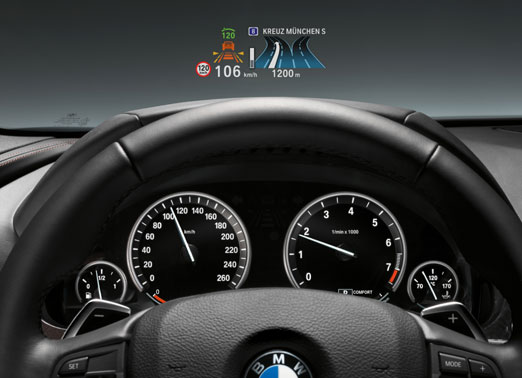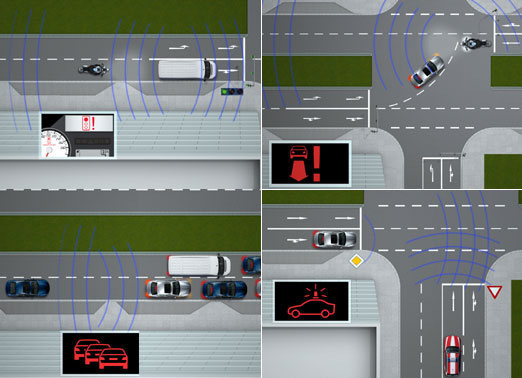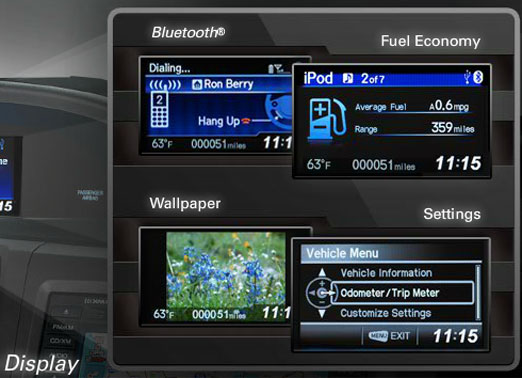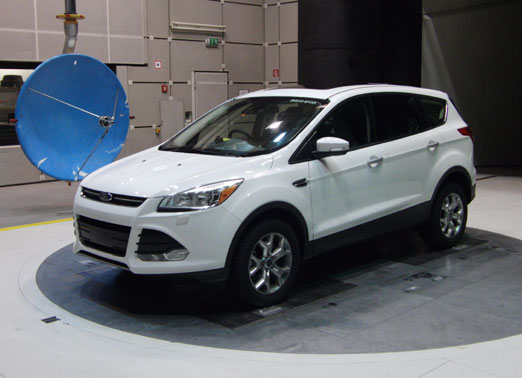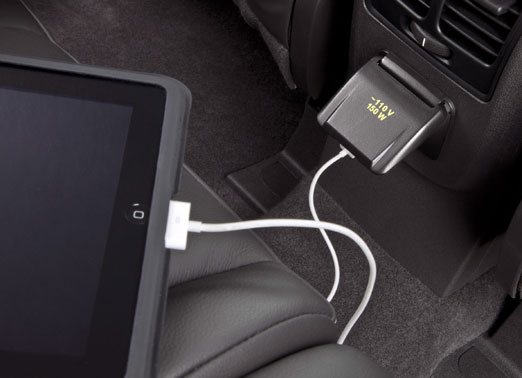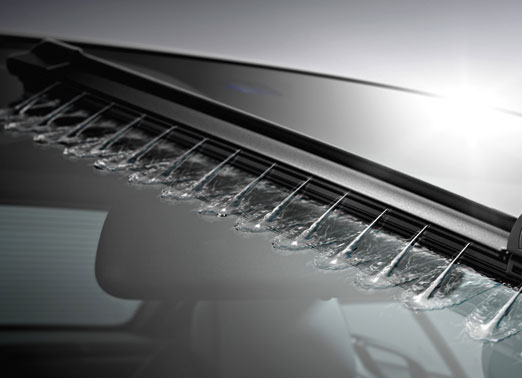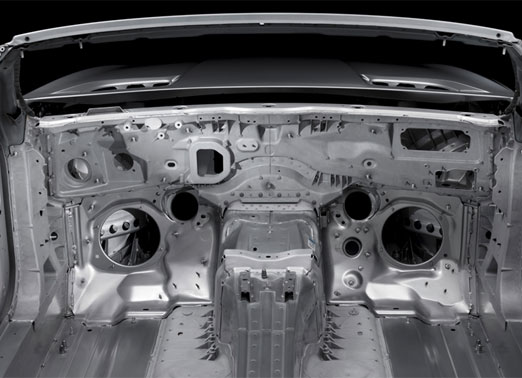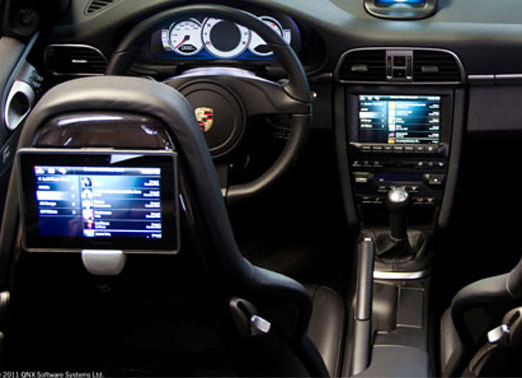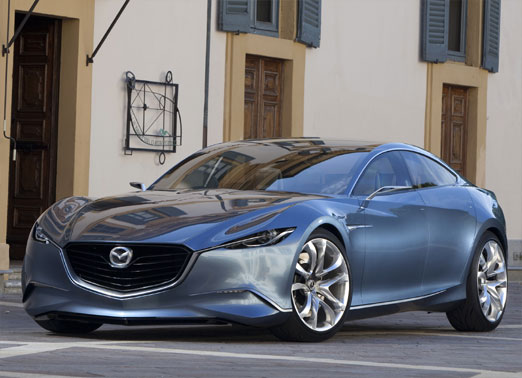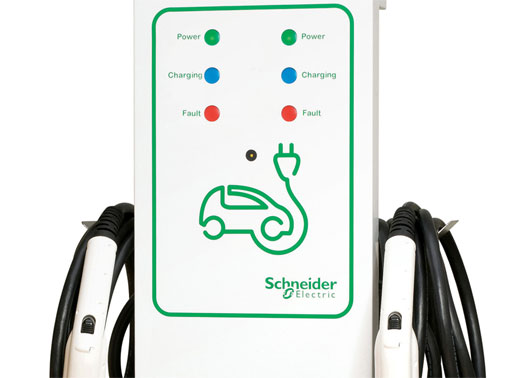Here’s a preview of some of the most cutting edge in-car technologies hitting the show floor at the 2012 Canadian International Auto Show this week.
By Brian Jackson
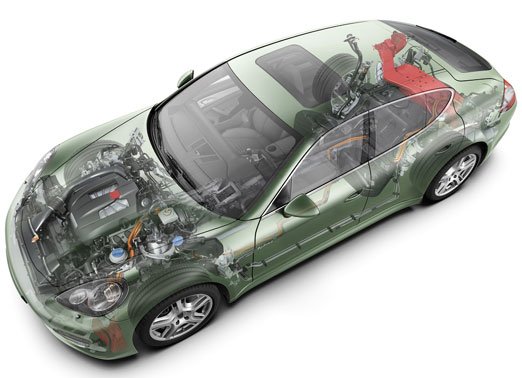
-
BMW’s Head-up Display
BMW has adapted this technology used in aviation for jet pilots to its BMW 5 series cars since 2004. Now it has been developed into a full-colour display projected onto the windshield just above the dash, and included in almost all series of BMW cars. It’s part of BMW’s ConnectedDrive vision. The driver never has to take their eyes off the road to read critical information like speed, engine condition, and navigation information. The driver’s eyes also don’t have to adjust between long range focus and short range focus, keeping them fresher behind the wheel. The information displayed on the windshield is not visible to other passengers.

-
Cars that talk to each other
Another invention of BMW’s ConnectedDrive are sensor-filled vehicles that are aware of the variable conditions outside of the car – such as what other cars are doing, what colour the light is at the next intersection, and whether an emergency vehicle is speeding towards you. Car-to-x communication relies on networking of vehicles thorugh mobile phone connections or wireless LAN.It’s designed to give drivers more time to react to the conditions on the road, helping reduce stress and in some cases, avoid hazardous situations all together.

-
Honda’s i-MID
Honda is unveiling its new in-car infotainment system with its 2012 models. It stands for intelligment Multi-Information Display, and its the screen that sits in the middle of the Civic’s instrument panel. It allows users to load up photos as wallpaper, similar to on desktop PCs. It delivers information on the music playing in your car, what mileage you’re getting, and points you in the right direction with the navigation system. It’s Bluetooth compatible to connect with your cell phone for hands-free calls.

-
Ford’s stealthy SUV
Sometimes its not the technology in front of the driver, but behind the scenes in the making of the vehicle that makes a great car experience. Ford credits an ellipitcal acoustic mirror for reducing wind noise in the design of its 2013 Ford Escape, resulting in a quieter ride. Used more commonly by European luxury vehicle manufacturers, the mirror can detect noises on the surface of the vehicle and in its surrounding airflow. Engineers were able to adjust the design while in the clay model phase to reduce noisiness.

-
Ford Escape 2013
Ford’s Escape is not only quiet, it’s loaded with tech features including the MyFord Touch system that connects with mobile devices through Bluetooth. Drivers control the system using a central touch screen, or with voice-activated commands. There’s also a motion-sensing mechanism that opens the trunk at the mere swoop of your leg. Another thoughtful feature for tech heads in the 2013 Escape is the inclusion of a proper outlet so all those tablets and smartphones can stay charged.

-
Mercedes-Benz and ‘Magic Vision’
If you thought that wiper blades were pretty straight-forward and couldn’t be improved by modern technology, think again. Mecedes’ magic vision control cleans off the most-soiled of windshields without the appearance of any water jets. The secret is in laser-cut wiper blades that have two precision-formed water channels that emit water only just in front of the wiper blade lip, depending on the motion of the wiper. The result is a clean windshield without a disrupting splash of water across your field of view.

-
Mercedes-Benz Frontbass system
Mercedes’ new SL Roadster features some new speaker technology. By creating free space in the aluminum structure supporting the front footwell of the car, there is more resonance room and the result is a crisper sound approaching a concert hall ambience. The system tunnels sound in a way that results in greater volume at lower energy use. There’s also mid-range and high-tone loudspeakers in the doors, the dashboard and rear. The goal of the system is to produce precise sound quality akin to a stage reproduction.

-
QNX concept Porsche Carrera
It’s not at the Auto Show, but Ottawa’s QNX Software showcased a Porsche Carrera at the Consumer Electronics Show in Las Vegas to demonstrate its in-car operating system. QNX provides the underlying software that auto manufacturers adapt for infotainment, voice-recognition and Bluetooth connectivity. The concept car showed off one-touch Bluetooth pairing with Near Field Communications (NFC) technology, and integration of tablets into the rear seat of the car that can be controlled by the driver. The touch screen control is an HTML5 interface.

-
Mazda’s Shinari concept
Mostly noted for its sleek design, Mazda’s latest concept car is also looking towards the future of in-car technology. It’s computer interface is divided into three modes: business, pleasure, and sport. It envisions drivers looking at the profile of a buisness contact on their way to a meeting, or telling the driver information about an upcoming turn.

-
Who revived the electric car?
Both hybrid cars and all-electric vehicles are going to feature prominently at the auto show this year. To solve the problem of recharging a car’s battery on the go (without having to wait for several hours), Schneider Electric has introduced fast-charging stations resembling gas pumps. The pumps are built with safety features to avoid short circuiting, and an LED screen on the pump displays charging status.





